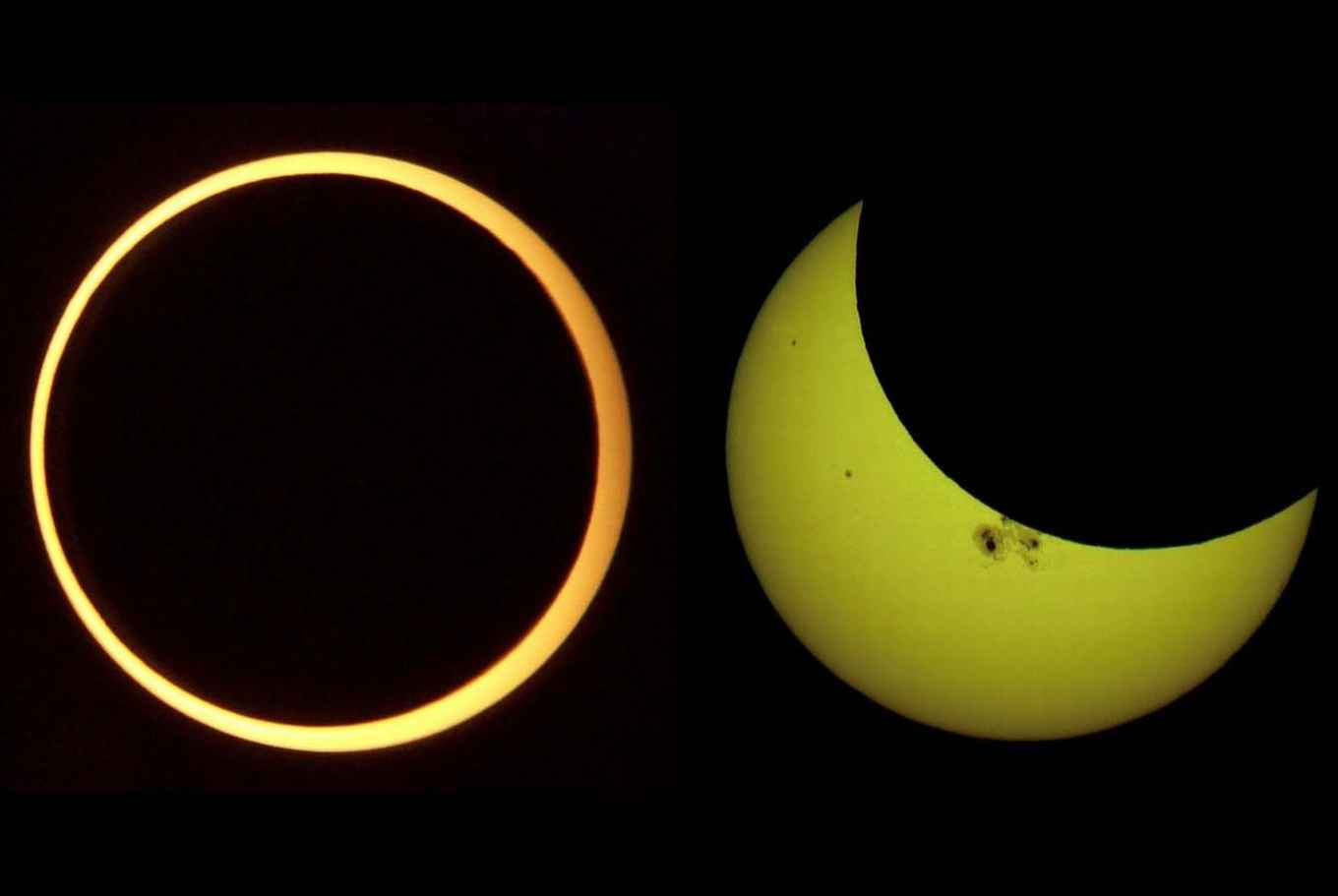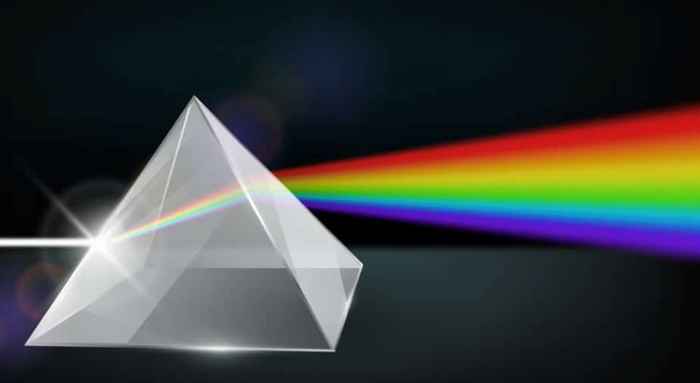Blog: Solar spectroscopy
By PhD candidate Kenzie Nimmo
31 May 2021

What’s a solar eclipse?
This is when the Moon passes between the Earth and the Sun and either totally or partially covers the Sun from our line of sight. In the most extreme case of a total solar eclipse, the Moon completely covers the Sun allowing for a clear view of the Sun’s faint corona. An annular eclipse is when the apparent diameter of the Moon is smaller than that of the Sun and the Moon is perfectly lined-up with the Sun. This creates a ring-shape (see Figure 1, left). A partial eclipse is when the alignment is not so perfect and causes the Sun to be more crescent-shaped (see Figure 1, right).

Eclipse glasses
Of course you don’t need a special solar telescope to observe a partial eclipse. Observing the eclipse with the naked eye or even a normal telescope, however, is extremely dangerous. Instead you can use solar eclipse glasses which are perfectly designed to only allow a millionth of the Sun’s light through to your eyes.
API Serena Vinciguerra has designed solar viewing glasses with a print design showing the solar spectrum. The light that we see from the Sun through the solar glasses is white light. This white light can be broken up into lots of different colours, or wavelengths. As an illustration, look at Figure 2, which shows white light entering a glass prism. When the light enters the prism it is refracted, or bent, by an amount that depends on the wavelength. As you can see, the red light is bent more than the blue light, and we can identify each colour individually on the right in what we call a spectrum.

Spectra
In astronomy, we study the spectrum, which essentially shows how bright the light is at the different colours, or wavelengths. The spectrum can hold clues about many different physical properties of the astronomical object, such as chemical composition, mass and temperature.
For example, in Figure 3 we show the solar spectrum in graph form. The dips that are visible in the coloured part of the graph are called absorption lines, and tell you which elements are present in the Sun. Spectroscopy (which is what we call the study of spectra) was crucial in solar physics to identify the chemical components of the Sun, which, in turn, gives clues about the life cycle of stars, how they form, and even how our Solar System came to exist.
Spectroscopy can also be used to determine the physical properties of stars that are much farther than our Sun. We can also use it to study other astronomical objects such as galaxies, e.g. to determine whether the galaxy is full of young stars or has an older stellar population, and we can even work out how far away galaxies and other astronomical objects are from us using their spectra.
We hope you join us on our livestream of the partial solar eclipse on June 10, and if you’re interested in seeing it for yourself we recommend you get some solar eclipse glasses. We will be handing out some eclipse glasses around the city in the weeks preceding the eclipse!